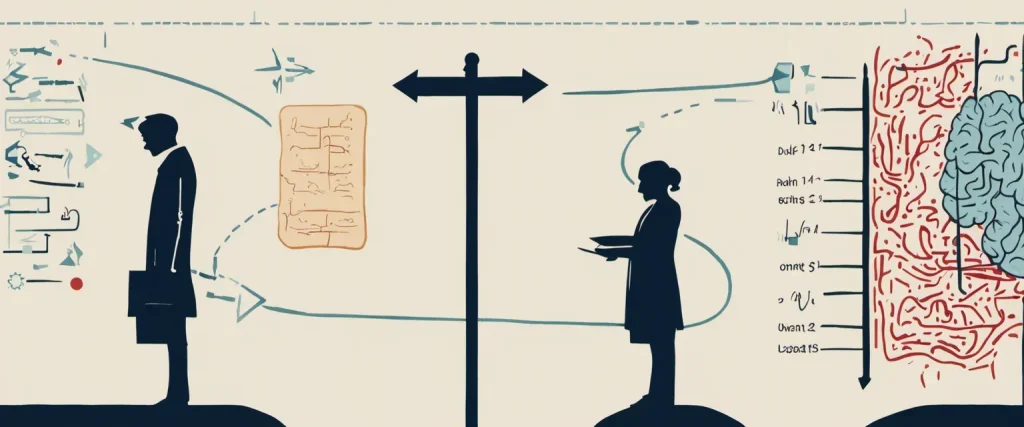In his captivating book, “Influence,” acclaimed psychologist Robert B. Cialdini dives into the art and science of persuasion, shedding light on the various tactics used to influence human behavior. Pioneering the field of social psychology, Cialdini has spent his career researching and exploring the principles of influence, drawing upon his extensive experience in sales, advertising, and communication to unravel the secrets behind our susceptibility to the power of persuasion. With his expertise in the subject matter, Cialdini provides readers a profound understanding of these principles while offering valuable insights into their impact on our daily lives and decision-making processes.
Chapter 1: Introduction to Influence
Chapter 1 of the book “Influence: The Psychology of Persuasion” by Robert B. Cialdini introduces the concept of influence and the fundamental principles behind it. Cialdini starts by acknowledging that involuntary compliance is a common aspect of human behavior, and this compliance can be exploited by individuals and organizations for various purposes. The chapter sets the stage for understanding the psychological processes that make people susceptible to persuasion.
Cialdini discusses his personal experiences with sales professionals, who used persuasive tactics to make him purchase items he did not originally intend to buy. He explains that his curiosity about the techniques used by these individuals led him to research and study the topic of influence extensively.
The chapter introduces the six universal principles of influence that Cialdini identified through his research: reciprocity, consistency, social proof, liking, authority, and scarcity. These principles are presented as the key drivers behind human compliance and are explored in depth throughout the book.
Cialdini emphasizes that influence is not inherently bad, as it can be used positively to bring about social change and aid others. However, he also warns that it is important to be aware of the tactics used to influence us, as they can lead to harmful or unintended outcomes if we are not cautious.
Overall, Chapter 1 provides an introduction to the book’s central themes, illustrating the power of influence in our daily lives and laying the groundwork for the subsequent exploration of the six principles.
Chapter 2: Reciprocation
Chapter 2 of “Influence” by Robert B. Cialdini focuses on the principle of reciprocation, which explores the universal tendency in human behavior to feel obligated to repay others for the help they provided. The chapter explains how reciprocation influences social interactions, decision-making processes, and marketing strategies.
Cialdini begins by illustrating the powerful impact of reciprocation through an example of Hare Krishna members distributing flowers at airports. By offering individuals a small gift, such as a flower, the Hare Krishnas trigger a deep-seated societal norm that compels people to reciprocate the gesture. This reciprocity creates a sense of indebtedness, often leading to people donating money to the organization or buying their books.
The principle of reciprocation is ingrained in human culture as a way to foster cooperation and create social bonds. It can be seen in various forms, such as gift-giving customs around the world. Cialdini highlights that even societies unaffected by the modern marketing techniques still abide by the rule of reciprocation.
Marketing experts have taken advantage of this principle by utilizing various tactics. For instance, they employ the door-in-the-face technique where they make an initial large request, expecting it to be declined, before following up with a smaller, more reasonable request. The potential buyer feels compelled to reciprocate the compromise, making it more likely for them to agree to the subsequent, smaller request.
Cialdini also introduces the rule of obligation and refers to the power of free samples as an effective marketing strategy. By offering free trials or samples, companies tap into the psychological need to reciprocate the perceived kindness, leading people to purchase the product later on.
Overall, the principle of reciprocation is deeply ingrained in human behavior and is skillfully employed by marketers to influence decisions and foster cooperation. Recognizing this tendency is crucial for both marketers and individuals to make better-informed choices.
Chapter 3: Commitment and Consistency
Chapter 3 of “Influence” by Robert B. Cialdini focuses on the principle of commitment and consistency and how it influences human behavior. The chapter delves into the idea that people have a natural inclination to stay true to their commitments and remain consistent with their past actions and beliefs.
Cialdini begins by presenting a study conducted by a team of psychologists who approached homeowners to put up a large sign on their lawn promoting safe driving. Surprisingly, a vast majority of homeowners who agreed to display a small “Drive Carefully” decal in their windows earlier also agreed to the larger sign, even though it was a much larger request. This exemplifies how the principle of commitment works, as people are more likely to comply with requests that align with their previous commitments.
The chapter goes on to discuss the psychological mechanism behind commitment and consistency. Humans desire to view themselves as consistent beings, and they fear appearing fickle or indecisive. Cialdini provides examples from social and marketing contexts, explaining how individuals tend to stick with their prior choices to maintain this self-perception.
Additionally, Cialdini explores how individuals commit to their actions as a means of reducing cognitive dissonance – the discomfort experienced when holding conflicting attitudes or beliefs. By staying consistent with previous actions, individuals can avoid experiencing this dissonance.
Cialdini also highlights the powerful influence of written commitments. When individuals put their promises on paper or make them publicly, they become even more motivated to stay consistent, as they fear the negative consequences of breaking their commitments.
In conclusion, Chapter 3 of “Influence” focuses on the significance of commitment and consistency in influencing human behavior. Understanding this psychological principle can help individuals and marketers effectively influence others by leveraging the natural tendency to honor commitments and maintain consistency in their actions and beliefs.

Chapter 4: Social Proof
Chapter 4 of the book “Influence” by Robert B. Cialdini discusses the concept of social proof and its impact on human behavior. Social proof refers to the tendency of individuals to look to others for guidance on how to behave in ambiguous situations. The chapter explores various experiments and real-life examples to demonstrate the power of social proof.
Cialdini begins by describing a study in which researchers dropped confederates on busy New York City streets to look up at the sky. Observing this, passersby also started gazing upwards, even though there was no apparent reason to do so, demonstrating the influence of social proof. The author explains that humans have a natural instinct to imitate others in order to make correct decisions, as we assume that others possess more knowledge or information.
Additionally, Cialdini discusses the phenomenon of behavioral contagion, where people imitate the actions of others unconsciously. He provides an example of a canned laughter track in a television show, which influences viewers to laugh more, even if they didn’t find the content humorous. This demonstrates the power of social proof in shaping our behavior without our conscious awareness.
The author also explores the implications of social proof in marketing and advertising. He explains that businesses often use testimonials or mention the popularity of their products to convince potential customers. By showing that others have already made the decision, it creates a sense of validation and trust, leading to increased sales.
Finally, Cialdini warns against blindly following social proof, as it can sometimes lead to negative outcomes. He advises readers to be aware of situations where social proof may be manipulated, such as false claims of popularity or the use of paid actors in testimonials.
In conclusion, Chapter 4 of “Influence” emphasizes the significant impact of social proof on human behavior. By understanding how social proof works, individuals can become more aware of its influence and make better decisions based on their own judgement rather than simply following the crowd.
Chapter 5: Liking
In chapter 5 of “Influence” by Robert B. Cialdini, titled “Liking,” the author delves into the power of liking and its influence on human behavior. Cialdini explores how people are more likely to be persuaded by those they like and emphasizes the importance of recognizing and utilizing techniques that exploit the principles of liking.
The chapter begins with an examination of multiple factors that contribute to liking, including physical attractiveness, similarity, and compliments. Cialdini explains that people are naturally drawn to attractive individuals, tend to trust and be influenced by those who are similar to them, and feel a sense of obligation towards those who have complimented them.
The author further explains that people often rely on shortcuts or heuristics to determine their feelings towards others, such as relying on appearances or similarities. Marketers and salespeople often use these shortcuts to their advantage by ensuring their products or services are associated with attractive models or individuals the target audience relates to.
Cialdini introduces the concept of the halo effect, which suggests that people tend to attribute positive traits to attractive individuals, assuming they possess other desirable qualities as well. He explains how this can be exploited by companies when they use attractive models to promote and sell their products.
In addition to physical attractiveness, similarity plays a significant role in influencing people’s choices. Cialdini provides various studies that demonstrate how people are more likely to trust advice and make decisions based on recommendations from individuals they perceive as similar to themselves.
Finally, the chapter concludes with a discussion on the power of compliments. Cialdini emphasizes that sincere compliments and expressions of liking create a sense of obligation within individuals, making them more susceptible to influence and persuasion.
Overall, this chapter highlights the critical role of liking in influencing human behavior. By understanding and utilizing the principles of attractiveness, similarity, and compliments, individuals and businesses can effectively persuade others and increase the likelihood of obtaining desired outcomes.
Chapter 6: Authority
Chapter 6 of “Influence” by Robert B. Cialdini explores the concept of authority and how it influences our behavior. The chapter begins by highlighting the natural tendency for humans to obey and respect authority figures. This instinct is deeply ingrained in our society as authority figures, such as doctors, teachers, or police officers, hold positions that imply knowledge, expertise, and power.
Cialdini delves into various experiments and studies that demonstrate the power of authority. For instance, he discusses Stanley Milgram’s famous experiment on obedience, where participants were instructed to administer electric shocks to another person under the guidance of an authority figure. Shockingly, a significant number of participants obeyed the authority figure’s instructions despite the apparent harm they were causing.
The author also examines the importance of symbols and clothing in conveying authority. People tend to attribute credibility and expertise to those who wear uniforms, lab coats, or other symbols of authority. This explains why salespeople and marketing professionals often dress professionally or use titles and affiliations to establish trust and persuade potential customers.
Furthermore, Cialdini explores the concept of authority figures using the “click, whirr” trigger on our automatic responses. When we encounter an authority figure, our brain instinctively shifts to autopilot mode, making us more likely to comply with their requests without considering the consequences or rationale behind them.
In conclusion, Chapter 6 explores the powerful influence of authority on human behavior. Understanding the impact of authority figures and symbols can help us become more aware and resist manipulations that exploit this tendency for obedience.

Chapter 7: Scarcity
Chapter 7 of the book “Influence: The Psychology of Persuasion” by Robert B. Cialdini explores the concept of scarcity and how it influences our decision-making processes. The chapter delves into the idea that people tend to place a higher value on things that are perceived as rare or in limited supply.
The chapter begins by discussing the psychological principle of reactance, which refers to the negative emotions individuals experience when their freedom or options are restricted. Reactance plays a crucial role in scarcity, as people tend to want something more when they believe they might lose the opportunity to acquire it. This fear of missing out leads to increased desire and motivation to obtain scarce resources.
Cialdini presents several influential tactics that exploit the scarcity principle. One such tactic is the limited number technique. By creating the perception that an item is in short supply or limited edition, marketers can increase demand significantly. This technique is effective because people believe that if others desire and pursue a scarce item, it must be valuable.
Another tactic discussed is the deadline technique. In this case, creating a sense of urgency through limited-time offers or deadlines induces people to take immediate action. Cialdini explains that when individuals believe they might miss out on an opportunity, they tend to act swiftly to secure the resource, often making impulsive decisions in the process.
Scarcity is also a powerful tool in social influence. The chapter highlights how scarcity influences social proof and liking, two other principles discussed earlier in the book. People are more likely to be attracted to scarce items or perceive others as more valuable if they possess something rare or exclusive.
Overall, Chapter 7 emphasizes that scarcity is a persuasive trigger as it taps into people’s innate fear of losing out. By creating perceived scarcity, marketers and individuals can significantly influence others’ decisions and behavior, making scarce resources appear more desirable and valuable.
Chapter 8: Conclusion and Ethics of Influence
Chapter 8 of “Influence: The Psychology of Persuasion” by Robert B. Cialdini serves as the conclusion to the book. In this chapter, Cialdini reflects on the power of influence and highlights the importance of understanding and defending against the various techniques used by compliance professionals.
First, Cialdini emphasizes that being aware of the principles of influence discussed throughout the book is crucial in order to avoid falling victim to manipulation. He explains that recognizing the tactics employed by compliance practitioners arms individuals with the ability to resist their influence and make informed decisions.
Furthermore, Cialdini emphasizes the ethical implications of using manipulative techniques to gain compliance. He raises concerns about the potential for abuse and emphasizes the importance of maintaining ethical standards when attempting to persuade others. He suggests implementing a voluntary code of ethics to govern persuasion practices within organizations and society at large.
Cialdini also highlights the positive aspects of influence. He acknowledges that persuasion can be a powerful tool for positive change, including social progress, charity donations, or public health campaigns. However, he stresses the importance of using influence ethically and with a responsible approach, ensuring that it aligns with the values and best interests of those being persuaded.
In conclusion, Cialdini emphasizes the significance of being knowledgeable about the principles of influence to protect oneself from manipulation. He underscores the ethical dimension of persuasion, urging individuals and organizations to adopt responsible and ethical approaches when attempting to influence others. By understanding the psychology of persuasion and its ethical implications, society can be better prepared to navigate the complexities of influence in various contexts.
After Reading
In conclusion, “Influence” by Robert B. Cialdini provides an insightful analysis of the tactics people employ to persuade or influence others. Cialdini delves into the six principles of influence – reciprocity, commitment and consistency, social proof, liking, authority, and scarcity – and explores how these principles can be utilized both ethically and unethically. Through engaging examples and extensive research, Cialdini highlights the power of these principles in various aspects of life, such as sales, marketing, and personal relationships. Ultimately, “Influence” serves as a valuable guide for understanding the psychology behind persuasion and becoming more savvy in navigating the influence tactics employed by others.
1. Atomic Habits: An Easy & Proven Way to Build Good Habits & Break Bad Ones” by James Clear – This book offers practical advice on how to create lasting habits, which can greatly impact personal and professional success.
2. The Power of Now: A Guide to Spiritual Enlightenment” by Eckhart Tolle – This transformative book helps readers understand the importance of living in the present moment and offers guidance on achieving inner peace and fulfillment.
3. Thinking, Fast and Slow” by Daniel Kahneman – In this thought-provoking book, Kahneman, a Nobel laureate in Economics, explores the two systems of thinking that drive our decision-making process and provides insights into how we can make better choices.
4. Outliers: The Story of Success” by Malcolm Gladwell – Through engaging storytelling, Gladwell explores the factors that contribute to extraordinary success, emphasizing the role of opportunity, hard work, and timing in achieving greatness.
5. The 7 Habits of Highly Effective People: Powerful Lessons in Personal Change” by Stephen R. Covey – This classic self-help book lays out seven essential habits that can help individuals become more productive, organized, and successful in both their personal and professional lives.




Comments
Pingback: Building Lasting Agreements: Summary of Roger Fisher's Getting to Yes - Booksplease
Pingback: Unlimited Power: Igniting Your Inner Strength with Anthony Robbins - Booksplease
Pingback: A Haunting Farewell: Summary of 'The Long Goodbye' by Raymond Chandler - Booksplease
Pingback: Improving Decision-making: Insights from Nudge by Richard H Thaler - Booksplease
Pingback: Understanding the Impact of Rare Events: Key Takeaways from 'The Black Swan' - Booksplease
Pingback: Toxic Parents: Breaking Free from Emotional Abuse and Healing Wounded Inner Child - Booksplease
Pingback: Hidden Valley Road: A Gripping Tale of Family, Mental Illness, and Resilience - Booksplease
Pingback: Rites of Spring: A Cultural Exploration of World War I and Modernism - Booksplease
Pingback: Enron Unmasked: The Smartest Guys in the Room - Booksplease
Pingback: An Unforgettable Journey Through the Life of Lazarillo de Tormes - Booksplease
Pingback: Building Strong Bonds: A Summary of Siblings Without Rivalry - Booksplease
Pingback: Leadership Essentials: Unveiling the 21 Irrefutable Laws - Booksplease
Pingback: Eric Hoffer's The True Believer: Exposing the Roots of Extremism - Booksplease
Pingback: Social Influence: A Summary of The Social Animal - Booksplease
Pingback: A Summary of Stendhal's The Red and the Black - Booksplease